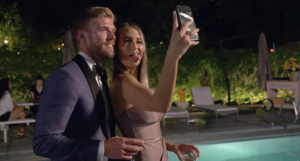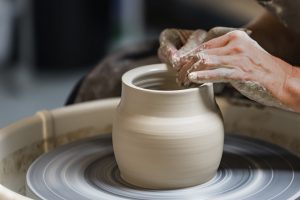For a show called So You Think You Can Dance, the first few episodes of the latest season don’t feature very much of it. Unfortunately, the lack of dance content is just the tip of the iceberg when it comes to the issues present in the 18th season of the reality show.
After a two year hiatus and a rebrand, So You Think You Can Dance (SYTYCD), a dance competition show that first aired back in 2005, returned for its 18th season in March. As in previous years, host Cat Deeley and a panel of ever-changing judges invite young dancers aged 18-30 to compete for the winning title, while learning choreography from and dancing alongside some of the most talented and notable dancers in the industry.
This season, the show features a panel of three all-new judges: Maksim Chmerokovsky, ballroom dancer and former 17-season Dancing With the Stars professional; Alison Holker, contemporary jazz dancer and a top eight finalist on SYTYCD season two; and Comfort Fedoke, Hip-Hop dancer and a top eight finalist on season four. Also new to season 18 is the foreshadowing of career-based challenges and an inside look at contestants’ interpersonal lives; though these episodes have yet to air, the new direction already feels like a betrayal to the show’s loyal dance-loving fanbase, and an effort to pander towards fans of more traditional personality-driven reality TV like Big Brother.
The show’s “new” concept makes no sense and has not impacted the format of the show so far. This season, the judges—as they remind us every 30 seconds, in case we forgot—are looking for people ready to be hired on the spot for commercial work, rather than… at the end of the season? It’s unclear. What the judges are clear on, though, is that they don’t want to see any more TikTok dances (which no one has done in seasons past, or in these auditions). Maks frequently pauses to remark upon how TikTok has created a generation of dancers with poor quality of movement who do not understand the industry, and promises that this new premise acts in opposition to that nonexistent syndrome—because, no one is scouting the “Dump Truck” hashtag for their new background dancers.
As a result of this ambiguous standard, the judging panel, Maks in particular, continuously turns away incredible dancers with less traditional ballet or contemporary training, including numerous breakers and street dancers, because they “fear they will not be able to transfer their skill to another style of dance.” But that very concept—trying new styles and executing them as perfectly as possible to stay in the competition—is the entire point of the choreography round and the partnered finalist stage. The eurocentric dance world has long struggled with this false narrative that the one true foundation of all dance is ballet. This idea invalidates countless styles with their own equally legitimate and complex forms of technique and training. Hip-Hop alone, a genre of music and dance born out of the Bronx by BIPOC in the 1970s, has multiple subgenres like breaking, bone breaking, whacking, and more, each of which has a rich history and foundational technique completely isolated from European ballet. The judges make assumptions rooted in racism and elitism to count out dancers who are plenty qualified to advance to the choreography round before they are ever given the chance to prove themselves—all in the name of “readiness for work today.”
Commercial dance work today is, notably, fraught with issues and lacking in raw, genuine talent. Yet, the show has come up with another way to bar fresh faces who could revamp the tired industry, and instead begun the hunt for conformists. The dance world of old is obsessed with discussing how competitive and cutthroat it is. The industry is racist, classist, and fatphobic, and moves closer every day to the overwhelming “tricks-over-talent” mentality that has warped competitive and commercial dance. And yet, leaders in this already troubled community continue to perpetuate the same cycles of abuse and bigotry, asking fresh, young talent to conform to this same torture because “we had to do it so you must too.”
It’s important to note that the dancers featured in these auditions are all incredibly talented. Rather than highlighting their talent for what it is, the narrative pushed for everyone with screen time, is that they excel in spite of circumstance, whether it be loss, grief, disability, poverty, etc. Young talents, hungry for the chance to prove their ability, are exploited for their sob stories and reduced to inspiration porn. These narratives devalue dancers’ hard work and strip all nuance from the conversation, creating a point-and-stare spectacle out of each of their most traumatic moments, all in the name of nonsensical buzzwords and a pathetic attempt at activism and allyship.
Take Kaylee Bays, for example. She is a brilliant dancer with Ehlers-Danlos syndrome, a group of genetic connective tissue disorders that can cause a range of mobility difficulties. For Bays, this means she has a limited amount of energy to expend, and she uses a wheelchair to conserve energy throughout most of the day. Bays has choreographed and taught accessible combinations and dances to disabled dancers both in person and online. She is a fantastic advocate, and one of the most expressive dancers I have ever seen, with impressive quality of movement. Instead of being revered for her talent, however, she is used as a two-dimensional plot device by editors and judges alike, milked as inspiration porn for the able-bodied. Bays deserves better, and while her inclusion on the show dominated by the able-bodied is a step in the right direction for representation in the dance world, the way her story is told is a disservice to her talent and personhood.
SYTYCD does have a saving grace, beyond the fact that it has cornered the market for dance competition shows: the footage of the waiting area. These dancers are all love, hugging and cheering one another on as they wait for their turn to audition. It’s a perfect representation of the other side of dance—of what the dance world could be if Gen-Z has its way, and what a future dance world that cares for dancers’ wellbeing looks like. Dancers growing up today are done with the emotional manipulation of grown adults pitting us against each other. We’re done with the bullying, body-shaming, and cutthroat attitudes of those who came before us, and especially done with the racism, classism, and fatphobia that our elders tried to convince us was “just how it is.”
Hopefully, SYTYCD will come back with a more authentic, dance-centered rebrand next season that uplifts and supports its dancers rather than sorting through the group for those who fit their mold and narrative. But whether the show decides to take a step forward or backward, it is time for the dance world to progress to fit the needs of this new generation of dancers, of people who will not stand for the bias and abuse in the name of “tradition.”




